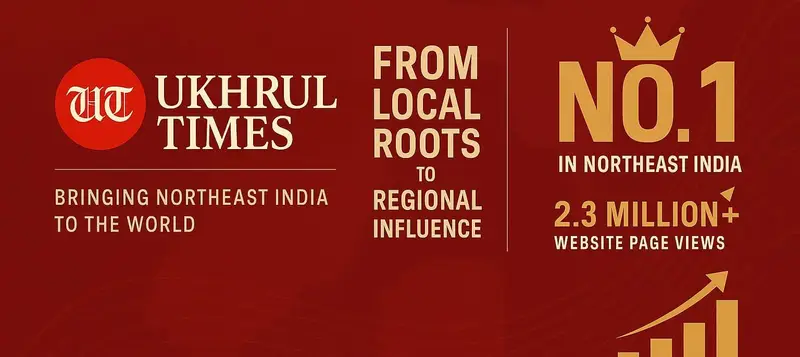Now Reading: ‘Kuki Black Day’ as Propaganda: The Truth Behind the Conflict
-
01
‘Kuki Black Day’ as Propaganda: The Truth Behind the Conflict
‘Kuki Black Day’ as Propaganda: The Truth Behind the Conflict

THE KUKI-NAGA ethnic conflict ignited in mid-1992, began in a small town of Moreh in Chandel district, Manipur.
It was marked by the Kuki Student Organisation’s (KSO) May 1992, “Quit Notice” which demanded that all Nagas leave the town within 24 Hours, forcing thousands of innocent helpless Nagas to abandon their homes and possessions.
In September 1992, the Kuki War Declaration Committee led by C Doungel and Holkhomang Haokip declared war on the Nagas without any provocation.
This was followed by Kuki National Front’s (KNF) unprovoked aggression against Naga villages in Chandel and Ukhrul district in April 1993, though the Nagas in Tamenglong and Senapati districts remained unaffected until September 1993.
Also read | Self-Governance for Naga and Kuki-Zo
Until June 1993, peaceful coexistence persisted between the Kuki and the other Naga villages in the Kangpokpi Subdivision. In August 1993, an initiative to foster peace emerged with the formation of the “Ahangruak/Tuiyang Area Peace Committee, which sought to prevent conflict between Kuki and Naga Communities. The Committee comprising of representatives from both groups, agreed to cooperate and avoid warfare. However, in the last week of August 1993, Mr Sepu Kipgen (from Makui Chalva Kuki village) also the Secretary of the said Peace Commiteee Deceitfully obtained the copy peace Agreement by claiming he needed to make a Xerox copy of it.” During his visit to Makui Naga village in August, Sepu conducted a thorough reconnaissance of the area. Following his detailed assessment, he relayed the gathered information to the Kuki National Front (KNF).
Despite, the peace efforts, the Kuki National Front had already devised a premeditated plan to completely annihilate the Liangmai Naga villages under Kangpokpi Subdivision (altogether 9 Liangmai Naga villages under Kangpokpi Subdivision).
The very “plan” of KNF driven by evil intentions against the will of God, undermining the very principles of justice and morality, marked the beginning of a devastating phase of violence in September 1993.
Must read | Shadows of Deception: Unveiling Atrocities by Kukis on Indigenous Communities
FALLOUT:
On September 9, 1993, thousands of Kuki volunteers from all Kuki villages under Kangpokpi Subdivision organized by the Kuki National Front (KNF), directed their aggression towards Tapon Naga village. Despite their relentless efforts, they were met with staunch resistance and were forced to retreat midway through their assault, abandoning their mission in disarray. What began with fierce determination ended in humiliation, as they withdrew with a heavy sense of defeat hanging over them, their ambitions thwarted and their pride diminished.
On September 10, 1993, another devastating attack was launched at Makui Naga village, also known as Makui Saramjoa. With relentless aggression, the KNF reduced the village to smoldering ruins, setting it ablaze and leaving nothing but ashes in their wake. Remarkably, despite the scale of the destruction, the assault yielded no casualties. This brutal assault marked a harrowing chapter in the conflict, highlighting the intense animosity and the tragic consequences of the ethnic strife engulfing the region.
Article | Shadows of Deception: Unveiling Atrocities by Kukis on Indigenous Communities
On September 11, 1993, the conflict escalated as the so-called Christian Kuki volunteers on Sunday (Sept. 11), led by the Kuki National Front (KNF) army, launched another assault on Makui Naga village (Makui Khullen), intent on annihilating the Liangmai Naga community. The villagers, from the strongest young men to the eldest elders, united with unwavering resolve to defend their home against the ferocious attack. The KNF initiated their onslaught at 5:00 a.m., unleashing a relentless barrage of gunfire and continuing their assault with full force throughout the day. Despite their aggressive efforts, the invaders faced fierce resistance and, by the evening at 5:00 p.m., were forced to retreat without achieving their goal. Among the casualties was a prominent KNF leader, whose fallen body was later recovered by the Manipur Police for post-mortem. The fate of this fallen warrior, whether to find peace or condemnation, rests with divine judgment.
On September 11, 1993, the sun stood still for MAKUI VILLAGE, casting a timeless glow over our moment of triumph as we defended our village against the evil invaders.” (The KNF launched three consecutive attacks on three Liangmai Naga villages, driven by a ruthless intention to completely annihilate the Liangmai Naga from the Kangpokpi Subdivision. Their brutal onslaught seemed unstoppable, fueled by a sinister desire to erase the community from existence. However, the Supreme God, recognizing the malice in the hearts of the attackers, intervened. In an act of divine protection, He shielded the Liangmai Naga villages from destruction, preserving their people from the grip of devastation. What was meant to be a massacre turned into a testament of faith and resilience, as the evil plans of the KNF were thwarted by the hand of the Almighty).
Back then, without telephone communication, we relied on a human chain to relay messages, ensuring that every word reached its destination through a network of individuals. Thus, risking our precious lives as we crossed through tens of Kuki villages, our SOS message eventually reached the headquarters of the Naga Lim Guard in the east. Subsequently, a contingent of Naga Lim Guard personnel, led by it’s Commander of the Zeliangrong region, was dispatched to fortify the defense of Makui Naga village and to rehabilitate and reestablish the Liangmai Naga villages that had been burned down by the KNF.
On that fateful day, September 13, 1993, as our Naga Lim Guard made their way to Makui Naga village, they encountered Kuki villagers from Joupi, who had stubbornly refused to evacuate their village for months. Believing that the three Liangmai villages had been entirely destroyed, and enraged by this information, the Naga Lim Guard tragically took the lives of 79 Kuki villagers from Joupi.
In their effort to justify their actions and frame themselves as victims, the Kuki sought to blame the Naga Army or NSCN-IM for their troubles. This narrative was strategically crafted to divert attention from the fact that it was their own unprovoked aggression that had compelled the Naga Lim Guard to seek vengeance. Contrary to the accusations levied by the Kuki, it was neither the NSCN-IM nor the Naga Army that was responsible for the tragic deaths of the Joupi villagers. This tactic was a deliberate component of a broader propaganda campaign aimed at consolidating Kuki power and rallying support. By casting themselves as the aggrieved party, the Kuki hoped to garner sympathy and legitimacy, while obscuring the true nature of their aggression and the complexities of the conflict.
Also read | Article 371-C Provides for “Hill Areas” and Maintaining Its Sanctity
History often reveals a complex web of conflicts involving the Kuki people, spanning clashes with the Karbis in Assam, the Paitei in Churachandpur, the Meiteis in the Imphal Valley, and the Nagas in both Manipur and Nagaland. Their strife extends beyond regional borders, encompassing conflicts with the Burmese in Myanmar and even with Bangladeshis. This recurring pattern invites a million-dollar question: why does the Kuki community often find itself at the epicenter of these disputes, seemingly initiating conflicts while simultaneously presenting itself as the aggrieved party? This dual perception of the Kuki as both instigator and victim reflects a multifaceted reality that merits a thoughtful and nuanced analysis, moving beyond a superficial understanding to appreciate the intricate layers of their historical and social dynamics.The dual perception of the Kuki as both instigator and victim highlights a disturbing reality that requires careful scrutiny to uncover the deceitful and violent nature underlying their historical and social dynamics. The Kuki narrative, unlike those of many other communities, is tainted by a pattern of deceitful exploitation of historical grievances and violent manipulation of cultural practices for self-serving ends.
(The author is a freelance writer he can be reached at liangmai367@gmail.com)
Also read | Why Kukis Cannot Claim Chandel As Part of “Kukiland”: The Lamkang Example
This is not a Ukhrul Times publication. UT is not responsible for, nor does it necessarily endorse, its content. Any reports or views expressed are solely those of the author or publisher and do not necessarily reflect those of Ukhrul Times.

















Alfzron84
Very well written historic details and accurate depiction of what has happened and what is about to happen
Meitei
Ukhrul times sucks …. everyone knows1000 kukis kill means …NSCNIM were the one , UKHRUL times should stop misinterpretation of History,keep thelogic among you KUKI still doesn’t forgive this act ,and will remain remember
Raingam K
Fake Meitei. Kuki acting as Meitei!!
BTW evety1 knows Kukis were the culprit and the instigator. So it’s obvious they have to bear the consequences if the other party retaliate. And when it happen you can’t blame the Nagas for the death of 1000s Kukis. They should be ashamed of using the victims card after being the instigator of the violence they started!!
The Kukis are the main actor in every violence with other groups be it with the Hmar, Paite, Karbi, Dimasa, Meitei and the Naga and also with the Bangladeshi Army!!
There is something wrong with this illegal nomadic race!
They must introspect among themselves and acknowledge their mistakes.
They cannot have the attitudes of subjugating other tribes under them.
They are the lost tribe of Israel aka Bnei-Menashe and cannot claimed at the same time as being belong to the Jews and as the indigenous race of Manipur, Nagaland and NE India.
Simple as that.
Period.